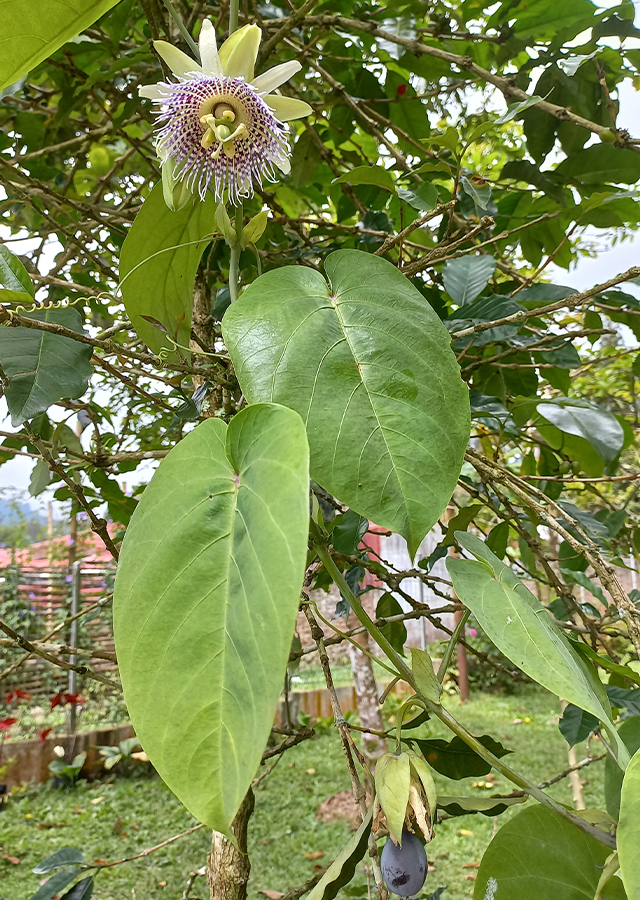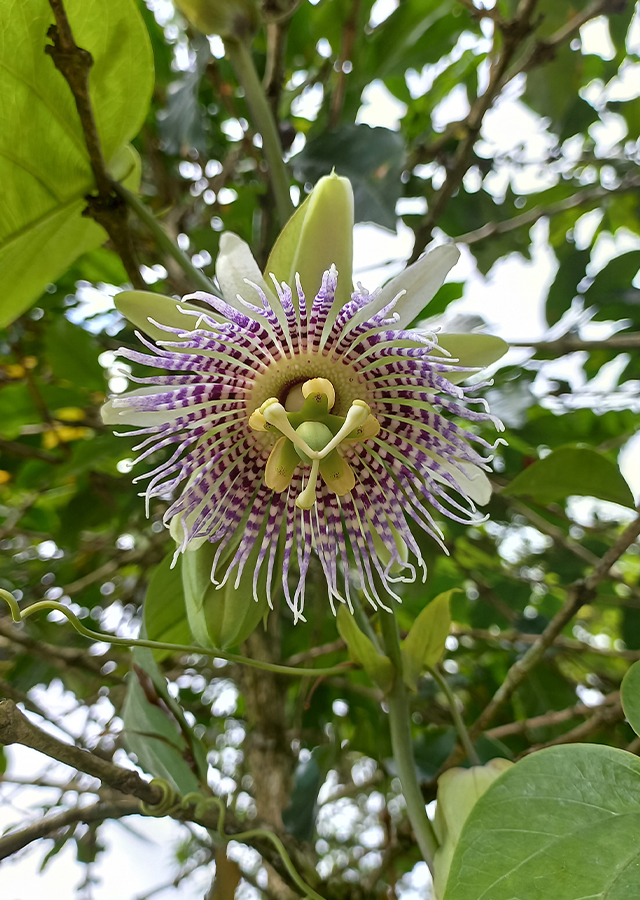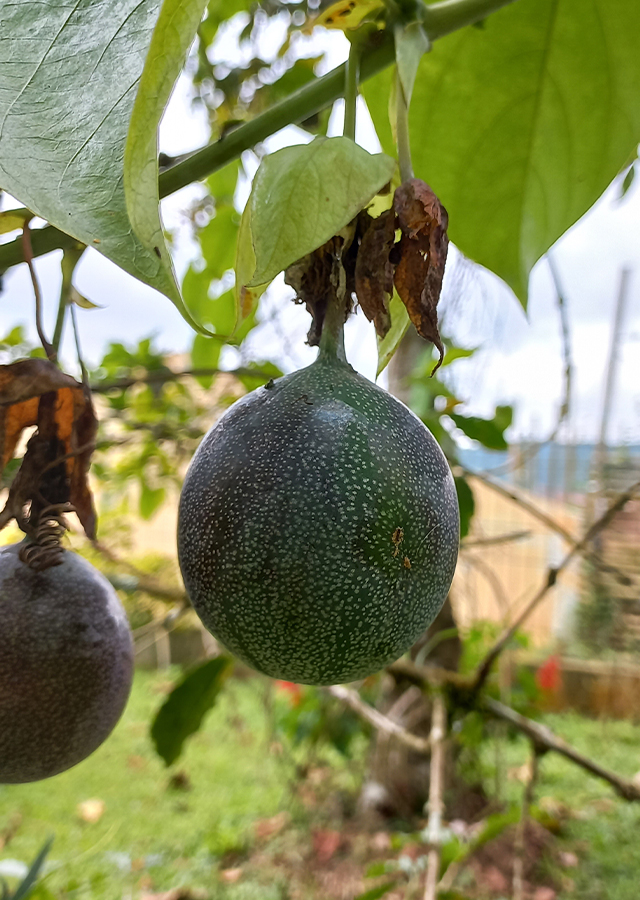Sweet Granadilla
Passiflora ligularis Juss.
Passifloraceae
Location in our garden
Principal



Synonym
-
Habitus
Climbers. A vigorous, evergreen climbing shrub producing stems ranging from 4 - 20 m or more long
Part Used
Leaves
Fruit
Roots
Growing Requirements
Need Shade
Habitat
Forest
Roadside
Terrestrial
Overview
Native to Mexico, Central America and northwest South America south to Bolivia. The plant is highly valued for its edible fruit and is harvested from the wild and also widely cultivated in many areas of the tropics and subtropics. The fruit is sold in local and national markets. The plant is also grown as an ornamental, valued for its large, fragrant flowers.
Vernacular Names
Granadilla común (Spanish), Barbadine (French), Maracujá doce (Brazil), Süße Grenadille (German), Sötgrenadill (Swedish), Suga prut (Papua New Guinea).
Agroecology
Passiflora ligularis is usually grown at elevations between 800 - 3.000 m in the tropics and down to sea level in the subtropic, it is said to be unsuitable for cultivation in the lowland tropics. It grows best in areas where annual daytime temperatures are within the range 22 - 26 °C, but can tolerate 16 - 31 °C. It prefers a mean annual rainfall in the range 1,000 - 1.200 mm, but tolerates 650 - 2,500 mm. Requires a humus-rich, moist but well-drained soil and a position in dappled shade.
Morphology
- Stems - greyish, furrowed, soft but woody at base, cylindrical (terete) or weakly angled, striate, glabrous, internodes up to 8 cm.
- Leaves - ovate, deeply cordate at base, abruptly acuminate, margins entire, 8-22 cm long, 6-17 cm wide, glabrous, venation pinnate, conspicuous, dark green almost blue upper side and a green-greyish underside, slight or strong violet tone in young leaves.
- Flowers - have a sweet, musky odour, are pendent, campanulate, 6-12 cm in diameter; sepals acute, green outside, white inside, 25-35 x 10-15 mm; petals 3 cm long, 1 cm wide, white or white tinged with pink or violet, oblong; corona with 5-7 rows of filaments, approx. 3 cm long, blue at tips and with alternate bands of white and reddish purple to the base; hypanthium 0.5-0.9 cm long; peduncle solitary or paired, 2-4 cm; bracts 3, ovate, acute, entire, cordate, membranaceous, glabrous but tomentose near margin, 2-5 cm long, 1-3 cm wide.
- Fruits - indehiscent capsule, 6.5-8 cm long and 5-7 cm wide with a 6-12 cm peduncle, it can be ovoid to spherical to slightly flat at the poles with the tip pointing towards the stem.
Cultivation
- Propagated by seeds - best sown as soon as it is ripe along with the pulp which will help break down the seed coat and speed up germination. Place the seed tray in a shady position, maintaining a temperature around 19 - 24 °C. Prick the seedlings out into individual containers as soon as they are large enough to handle and plant out when large enough.
- By cuttings of young shoots - taken at the nodes. The cuttings root best in a neutral to slightly acid compost, but 100% sharp sand also produces good results.
- By cuttings of fully mature wood - taken at a node. They can take 3 months, but there is usually a high percentage.
- By layering and air layering.
Chemical Constituents
Passiflorine, essential oil (heptacosane, squalene, pentadecanal, and ionol).
Traditional Medicinal Uses
- The juice has digestive and diuretic properties and is recommended for patients with ulcers or hiatal hernia since it contains wound-healing compounds. It also helps counter reflux in adults and babies. It has an antispasmodic effect and induces sleepiness.
- The leaves of many species are also considered to be anthelmintic, antihysteric and diaphoretic. They are used in Brazil to combat intermittent fevers, cutaneous inflammations, and erysipelas.
Part Used
Reference Sources
- Fern, Ken. Useful Tropical Plants. (2021). Passiflora ligularis. https://tropical.theferns.info/viewtropical.php?id=Passiflora+ligularis. 22-12-21.
- Cabi. Passiflora ligularis. https://www.cabi.org/isc/datasheet/116173. 22.12.21.


